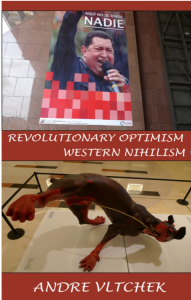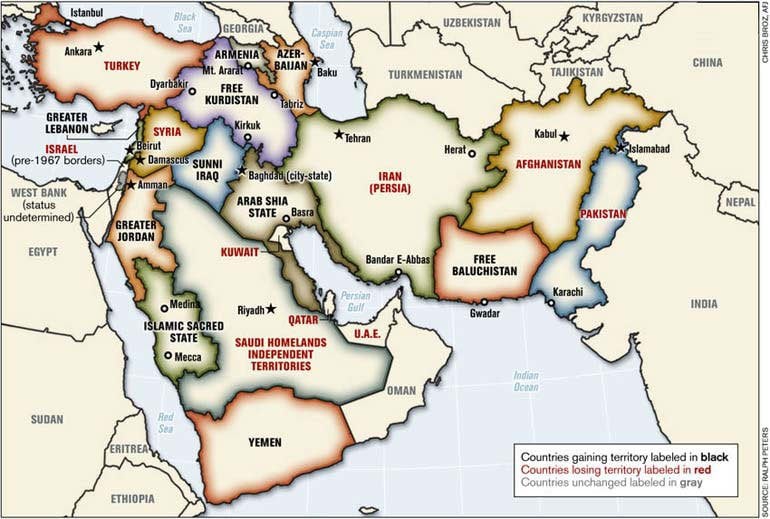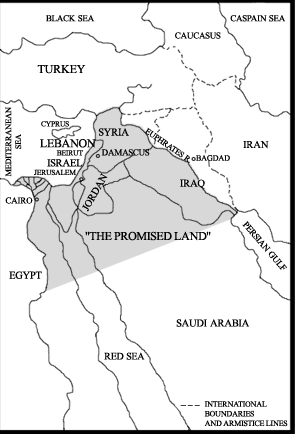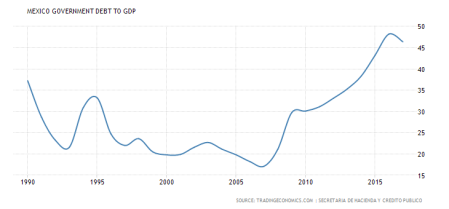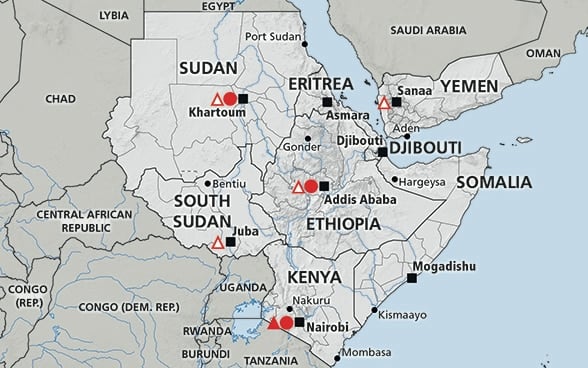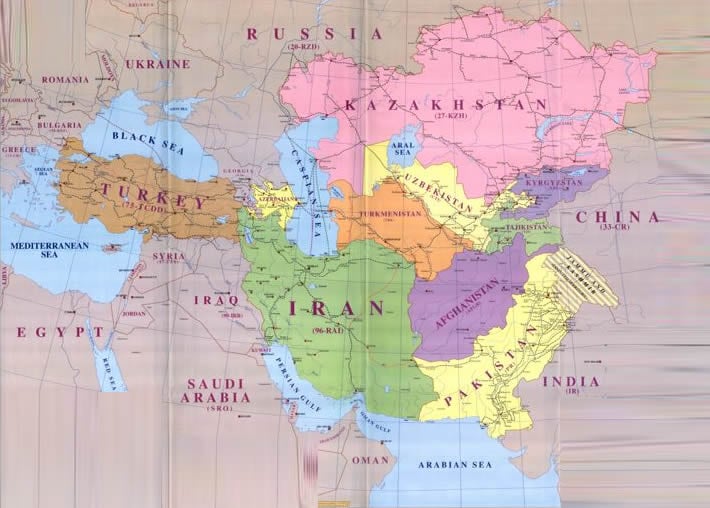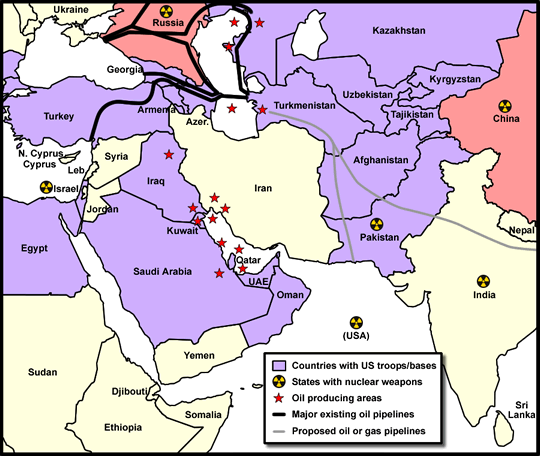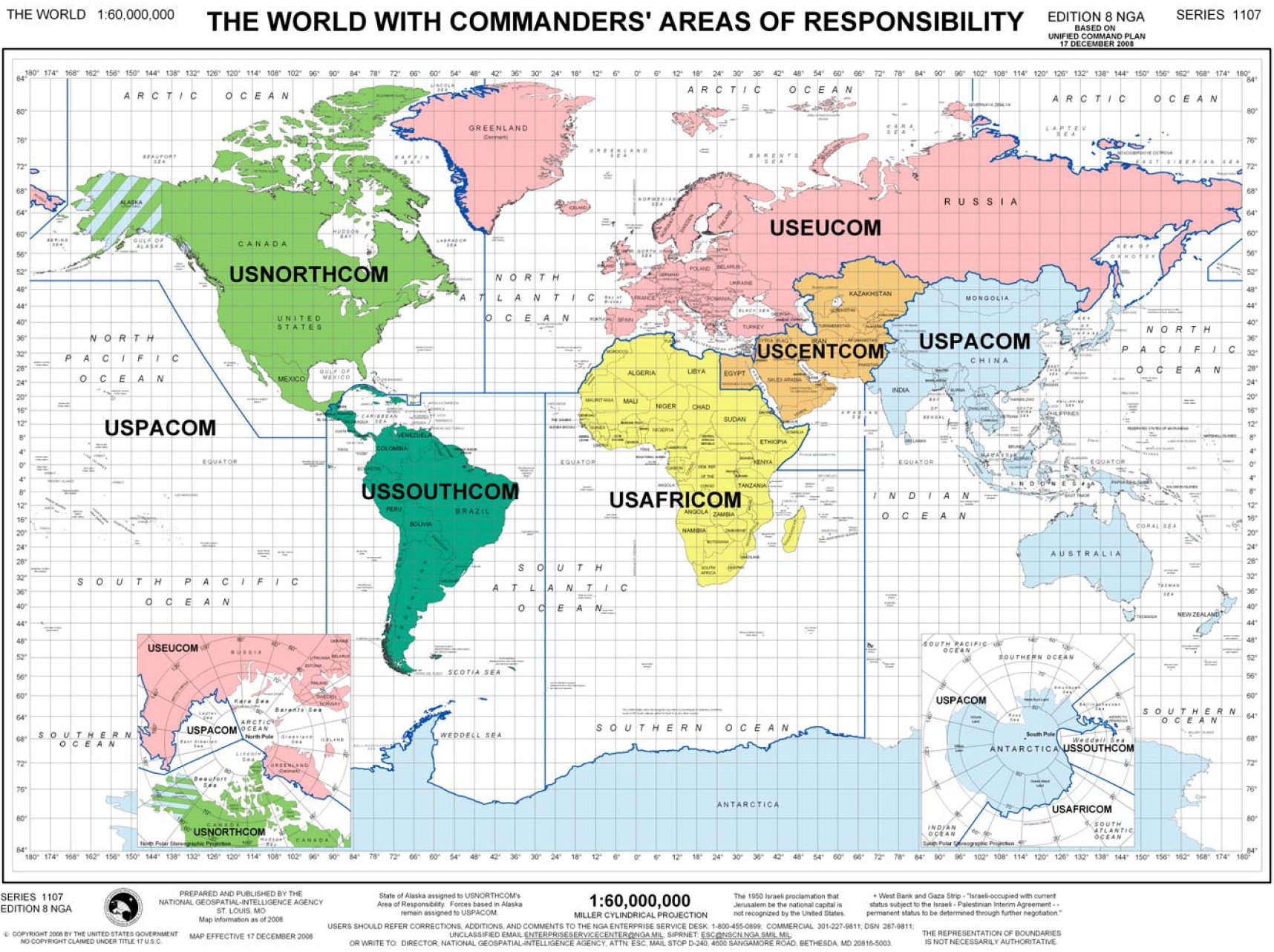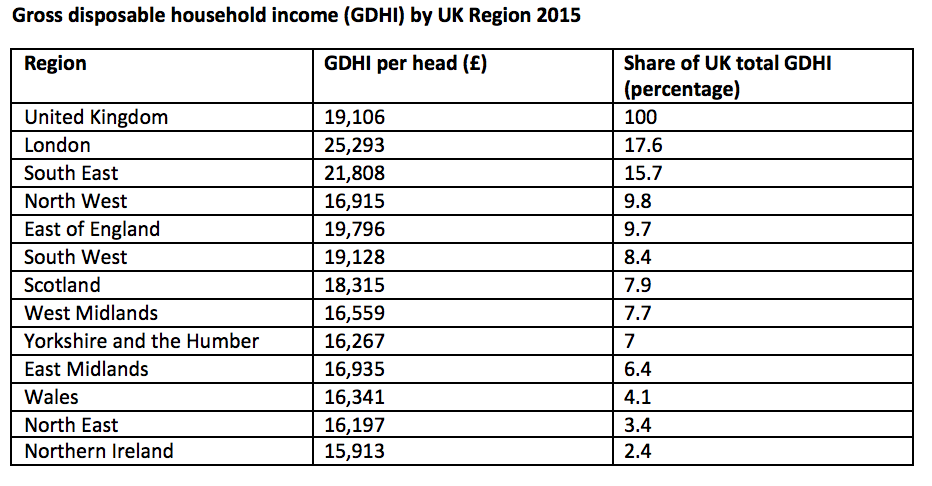The fever-pitched aura around this year’s elections in Pakistan was for good reason: a palpable feeling of transition from the old to the new was in the air. Meanwhile, the Western mainstream (and alternative) media, as well as much of the native elite English media, advanced an atmosphere of hysteria and moral panic at what they called “Pakistan’s dirtiest elections” ever.
We were told to believe that the Pakistani military, which undoubtedly has been involved in the political life throughout the country’s history, indeed directly ruling the country directly for half of its history, was the sole factor for which the corrupt and ruthless politicians of the two parties, who believe it is their birthright to play a game of musical chairs with each other, looting and plundering as much as possible before they are removed and get their next turn – were rejected in these elections.
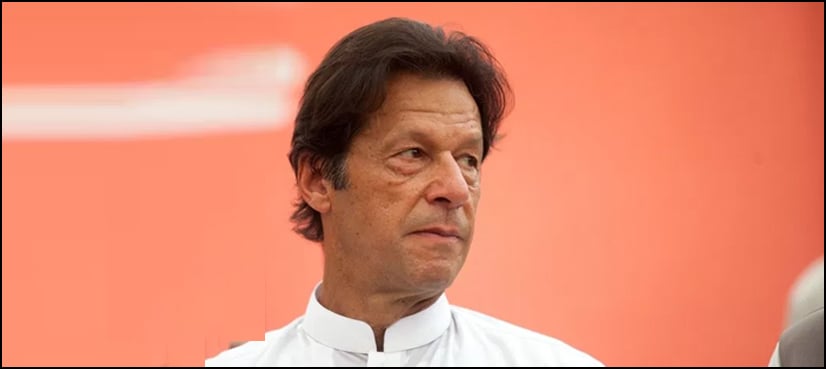 Pakistan-Tehreek-e-Insaaf (PTI), or the “Movement for Justice,” the political party of the iconic cricketer-turned politician Imran Khan, has swept this year’s national elections. They are the single largest political party in the country’s National Assembly, the unquestioned victor as the party that will continue to govern the province of KPK in the Northwest of the country (PTI governed the province for the past five years), and has even made inroads in Pakistan’s major city of Karachi, where they have displaced the once all-powerful Muttahida Quami Movement (MQM), which mafioso-style, with rampant intimidation, ransoms, and murders, ran the streets and political life of Kararchi since their inception in the 1980s. This of course was facilitated by a relatively popular demand that the Pakistani military come to the city and deploy rangers to ‘clean up’ the vigilantes of the MQM, and the bulging urban youth of Pakistan’s financial heartland voted en masse for PTI.
Pakistan-Tehreek-e-Insaaf (PTI), or the “Movement for Justice,” the political party of the iconic cricketer-turned politician Imran Khan, has swept this year’s national elections. They are the single largest political party in the country’s National Assembly, the unquestioned victor as the party that will continue to govern the province of KPK in the Northwest of the country (PTI governed the province for the past five years), and has even made inroads in Pakistan’s major city of Karachi, where they have displaced the once all-powerful Muttahida Quami Movement (MQM), which mafioso-style, with rampant intimidation, ransoms, and murders, ran the streets and political life of Kararchi since their inception in the 1980s. This of course was facilitated by a relatively popular demand that the Pakistani military come to the city and deploy rangers to ‘clean up’ the vigilantes of the MQM, and the bulging urban youth of Pakistan’s financial heartland voted en masse for PTI.
Imran Khan, who founded his PTI political party in 1996, had developed an impeccable reputation in both his leadership of Pakistan’s cricket victory in the World Cup of 1992 as well as his widely-respected social welfare activities in the country, including a cancer hospital for the poor in the name of his late mother. But Khan made a sharp turn in his life, and decided that to truly transform Pakistan, structurally and systemically so that the same rut does not keep reappearing with different (dynastic, feudal, or clan) names, political engagement was essential.
Though there are other smaller political parties, including provincial ones as well as a few national religious parties, the national civilian political life of the country has been dominated by two political parties: the Pakistan People’s Party (PPP) of the Bhutto family, formed amidst the anti-military dictatorship mass popular movement in the late 1960s, on the one hand, and the Sharif family who effectively were created out of thin air by the rightwing Zia-ul-Huq military dictatorship – in order to have the Sharifs and their Pakistani Muslim League (PML) to counter and undermine the renewed anti-dictatorship opposition emerging from the PPP.
After the death of Zia, Pakistani political life was effectively a duopoly with the PPP and the PML(N) taking turns in governing the country, with an interlude of another stint of military rule between 1999-2007 under Gen. Pervez Musharraf. The ostensible ‘governance’ of the country by the two parties was more akin to taking turns in engaging in gross corruption, plunder, and patronage to their sycophants. The health, education, and welfare of ordinary Pakistanis was not on the agenda of either of these parties. Though PPP was considered the ‘progressive/left’ party, and the PML(N) the ‘conservative/right,’ they effectively joined the international trend under this period of neoliberalism, of converging as an ‘extreme center,’ as Tariq Ali puts it – fundamentally no different in their social and economic policies, the only extremism demonstrated being that of servility to Washington, the IMF, the World Bank, and so on.
Pakistan’s transition to civilian democracy has always had major bumps here and there, and though the military shares its blame in its maneuvering and machinations in the country’s politics, the real curse has been that, since the Zulfiqar Ali Bhutto (who himself was by no means perfect, a megalomaniac, and in fact the first politician to begin to pander to the religious right, officially declaring the Ahmadiyya as non-Muslims and banning alcohol), Pakistani civilian ‘democrats’ have not really given Pakistanis a reason to bother whether they are ruled by the civilian plutocrats or the military. This is why there was absolute indifference to the military coup of General Pervez Musharraf in 1999, against the increasingly corrupt and authoritarian government of Nawaz Sharif.
But the past two decades, roughly paralleling the disastrous ‘Af-Pak’ theatre of the US ‘war on terror, political consciousness began to rise rapidly. This was also because, ironically, General Musharraf’s military regime actually permitted the explosion of media channels and widened ideological-theological diversity, under his semi-serious “enlightened moderation” project.
Imran Khan began really getting into the trenches of political activity in the movement against Musharraf’s dictatorship. That period, leading up till 2007, galvanized young people, lawyers, and ordinary Pakistanis in a profound way, creating a political consciousness that was neutralized and defanged during the entire neoliberal period. To bring about change, join (or even better, create your own) NGO – this was the rule of thumb for any Pakistani exhausted by her/his comprador class of incompetent and corrupt political ‘leaders.’ Before 2007, neoliberal ideology taught the world that politics is a messy business. The democratic civilian merry-go-round of the PPP/PML(N) of the 1990s achieved the goal of neoliberal ideology: de-politicization, atomization, and alienation of the population.
And since the shelf life of every military ruler of Pakistan never exceeding a decade, Musharraf was ousted in 2007, under a deal manufactured by Washington whereby the PPP’s longstanding leader, Benazir Bhutto, would be brought back to power. The tragic assassination of Benazir in Dec. 2007, of the ‘Daughter of the East’ (but to many, the ‘daughter of the West’), paved the way for her notoriously corrupt husband, Asif Ali Zardari, to take power on behalf of the PPP. The ‘progressive’ PPP has functioned as a family dynasty, with the daughter taking over and then, in her will, ‘bequeathing’ it to her husband and son.
Throughout Zardari’s reign from 2008-13, the country was again propelled in an sea of corruption combined with the most slavish servility to dictation from Washington. It was not difficult to understand why Zardari’s PPP got routed in the following national elections of 2013, bringing to power, once again, the same old face of Nawaz Sharif of the PML(N) as Prime Minister, and his brother Shehbaz Sharif as the Chief Minister of the Punjab, the largest and the most politically influential province in the country.
The Sharif brothers and their PML(N) political party have treated Punjab as their playground, where they will dominate not just the province, but the entire country. They could never fathom that any political force could arise to even remotely challenge their monopoly of political power in the province.
But as Khan did with Musharraf, and then with Zardari (as well as with the clownish head of semi-fascist MQM political party in Karachi – now decimated by the military’s intervention), he did with Nawaz Sharif. After the Panama Papers scandal that demonstrated that Nawaz Sharif had clearly been involved in massive corruption and money laundering, Khan would not leave the streets of Islamabad alone until the Supreme Court took notice of this. And when the Court did, it found Nawaz Sharif to be ‘unfit’ to be prime minister and called for the establishment of an anti-corruption court to fully investigate all charges of corruption. That court handed down its verdict weeks ago, a damning indictment of Nawaz Sharif and his daughter, Mariam Sharif, for not disclosing massive amounts of assets including prime property in London, and so on.
It is at this point, roughly around the 15th of July, that things begin to feel like the…US elections of 2016. PML(N) is the natural heir of power of the Punjab, and of Pakistan, and was a creation of the much-hated ‘establishment,’ or the ‘deep state.’ The Sharif brothers had no problem in permitting the most violent and repugnant forces on the loose during the 1990s when it served them and their business empire’s purposes to do so.
But as we all know, Washington has been in search of ‘moderate Islam’ now for a while, and you know that the world has gone upside down when Nawaz Sharif is presented as the liberal reformer advancing fairness and justice in society. It’s a bit like his friend-backer in Riyadh, MBS as he is called. The PML(N)’s rule was equally marked by corruption, unnecessary building initiatives all at the expense of investing in the education, health and well-being of ordinary Pakistanis.
But the PML(N) and Nawaz Sharif, even sitting in jail, felt entitled to once again win big time and Sharif essentially portraying himself as a martyr for ‘democracy.’
Things didn’t exactly work out that way.
Love him or hate him, Imran Khan has been a persistent bull in attacking the political class of all of the major political parties, for their utter indifference to the plight of the poor and the bulk of the population. As he said in his initial victory speech, “I believe a society should be judged not by the lifestyle of its rich, but of its poor.” The first component of Khan’s ‘manifesto’ (if we can call it that) is to make Pakistan a “welfare state” that delivers social justice to its people, and not simply be a playground for the elite. This of course is anathema to neoliberalism and international finance capital, where countries of the global south are merely supposed to prostrate themselves and their resources for Western elites and their native ‘friends’ in these formerly colonized countries.
But the problem Pakistan had begun to face even before Khan’s victory, was something eerily similar to the Pakistan’s own version of “Russiagate/Russia-phobia” fixation. Just replace Putin with the military establishment, and all the chips fall into place. Trump won because of Putin, and Khan because of either direct or indirect military support. Just like the Democrats ignore the sheer political bankruptcy of a candidate like Hillary Clinton, the PML(N) could not fathom how it being the (elite, deeply exploitative) ‘sons of the soil’ of the powerful Punjab could be trounced so badly. Just blame the establishment, or Putin, or both!
The maddeningly hysterical reaction to Khan from the liberals (who overnight ALL became PML(N) supporters) demonstrated quite clearly, for a while now, how the purse strings of the civilian ‘democrats’ has been tied to their subservience to Washington, Riyadh, and even New Dehli.
It’s not emphasized enough, but Pakistan’s decision to refuse to participate in the criminal Saudi war on Yemen in 2015 was a turning point. It was the beginning of the process of deepening decolonization, since the Saudis, Americans, etc. have always expected Pakistan to dance to their tune.
It is Imran Khan’s consistent and principled position against Af-Pak theatre of the ‘war on terror,’ his constant emphasis on a political solution rather than a military one, that had the liberals mocking him as ‘Taliban Khan.’ It was a cheap shot, since the bulk of the population agreed with Khan that American drone strikes are illegal an immoral, that the occupation of Afghanistan will definitely generate a Pashtun resistance, and that if Pakistan gets involved, militarily, in this imperial enterprise, it will face disastrous consequences. He was proven correct, with the enormous increase in militancy and terrorism throughout the country. His legitimate critique of American imperial policy – that always expected the Pakistanis to act as its satraps from early on in the Cold War – made the unthinking liberal that he is ‘anti-American’ or ‘anti-Western,’ whatever that means.
There is a deep psycho-cultural schizophrenia amongst the secular moderns of Pakistan that believe the West can do no wrong, and that we must self-orientalize ourselves as lazy, corrupt, backward, unchanging and static. The livelihoods of the country’s comprador liberal class depends on regurgitating this imbecilic narrative, so they can position themselves as the ‘enlightened few’ among an ‘herd’ of backward fundamentalists.
From the native elite who despised Khan both for his emphasis on decades elite ravaging and plundering of the country at the expense of suffering majority, as well as from arch-rival India which saw Nawaz Sharif as merely a cog in their expanding role as a sub-imperialist power, someone who would toe their line reflexively on whatever issue it may be – the shock and hysteria to Khan’s astounding victory was understandable. Throughout this period, Khan has been absurdly compared to Narendra Modi and Donald Trump, two men whose campaigns were based almost entirely on the ugliest forms of racism, bigotry, and fear of the ‘others,’ both internal and external. This fictional fantasy of the liberal elite could only hold water because they bought the cool aid that Khan was some irrational hater of the West, of India, and was a bit too much of an affinity with religion for them to swallow.
All of their commentary in elite English media demonstrated was that their contempt for Khan was really a contempt for ordinary Pakistanis, whom they thought were sufficiently ignorant and ‘backward’ that they not could see that his agenda, what he stood for, was completely being distorted by a Westoxificated Pakistani elite that takes more pride in their American/British accents than whether the nation is tackling issues such as widespread malnutrition and fatally unsafe drinking water that is affecting tens of millions of Pakistanis, especially children.
The first dastardly attack, as mentioned above, was to ridicule the cricketer-turned-politician as ‘Taliban Khan’ merely because he took an anti-war position. Islamophobia runs so deep in the ‘enlightened’ liberals and progressives of Pakistan that they are more than willing to endorse indiscriminate bombardment (by the US or Pakistani military, doesn’t matter) against peoples and areas that just seem ‘too Muslim.’ Long beards and the rest of it, not exactly fitting the profile of the secular modern that they want to showcase to the world as the ‘other Pakistan.’ The Pakistani Westoxificated native elite’s profiling of their countrywomen and men seems to be taken straight from a Western government’s ‘Countering Violent Extremism’ (CVE) playbook – with its ridiculously racist presumptions around Muslims and ‘radicalization.’
In the same light, he’s constantly accused of pandering to the religious right and not doing enough to distance himself from some of these groups and parties. First, it must be emphasized how hypocritical this is to come especially from the PML(N), the Sharif brothers the protégés of the most reactionary Islamist military dictator in the country’s history, and who continued to patronize these assortment of fanatical, sectarian fundamentalists, especially in the Punjab. But indeed, both the PML(N) and the ‘progressive’ PPP have courted religious parties as coalition partners in virtually every term of theirs in office.
But Khan is now being singled out for not speaking loudly enough on one issue that was given prominence last year, i.e. the Blasphemy Law and the status of the finality of the Prophet Muhammad – a clear reference to the problematic claim of the Ahmadiyya Muslims that one other prophet, Ghulam Ahmad, was the final one.
None of these are the issues that Khan ever raised. He was concerned with holding the high and mighty accountable, trying to reduce the cancerous corruption in the country, offer some form of a ‘welfare’ state, and resist being a quisling state that is expected to follow orders from Wshington, or Riyadh. But they were thrust upon him. The liberal critics who say that he has not spoken strongly enough on these very sensitive religious issues in the country suffer from criminal historical amnesia that forgets that the most progressive national leader in the country’s history, Zufiqar Ali Bhutto, initiated this intertwining of (reactionary) religion and politics, with things getting far worse in the following decades. This is what has been bequeathed to Imran Khan (not by his own choice) by the PML(N) and the PPP, who were complicit even when there were military regimes in power, in facilitating the free reign given to these violent and sectarian outfits.
From the word go, Khan has emphasized Islam as a religion that demands social justice, and offers what the liberation theologians call ‘a preferential option for the poor.’ Time and time again he emphasizes how Islam can only be made relevant if it is able to empower and uplift the marginalized and downtrodden, and to speak truth to power.
But of course, the liberal mantra’s cunning implication that ‘Taliban Khan’s’ pandering to the religious right is because he wants a restoration of draconian forms of Islamic punishments like stoning and all sorts of medieval impositions – pandering precisely to the hegemonic, Islamophobic discourse in the West.
As of now, as Khan is trying to form a coalition to get a majority in Parliament, he is seeking out independent candidates and other smaller parties, and not the religious parties. And also, just by the way, neither the PPP nor the PML(N) ever formed a government without some religious party as its coalition partner. But were are supposed to conveniently forget all of this because, well, Imran Khan opposes the disastrous ‘war on terror’ and wants to advance a more reformist and redistributive platform in the country – all anathema to Pakistan’s Westoxicated elites.
But perhaps the most compelling reason why it’s not just the ‘usual suspects’ of Khan-haters in Pakistan and in India (it’s media reaction has been as if Pakistan has launched a nuclear bomb to hit Dehli), but also, and more importantly, the entire barrage of animus from Western media and the political establishment they echo. Part of it is that Khan has been so deeply critical of US-NATO policies with regard to the ‘Af-Pak’ theatre of the ‘war on terror.’ Despite the fact that he is been at pains to give interview after interview to all of the major Western news channels in explaining a rational position on the topic, the obsequiously imperial Washington Post had the temerity to call him a ‘Taliban sympathizer’ in their headline, and the ‘newspaper of record,’ the New York Times, had a similarly obnoxious, racist headline stating that a, “Nuclear-armed Islamic Republic Gets Unpredictable New Leader.”
The depth of the hypocrisy and outright lies (you would think the NYT would’ve learned it’s lesson by now) that these headlines reveal are staggering. Khan is automatically unpredictable and to be feared merely because of the fact he is Muslim and has offered a rational, principled critique of some of the policies of the United States, including drone attacks – and has explained his position clearly, generously in interview after interview, in more coherent English than Trump could do in a million years.
None of it mattered. The recycled script from post 9/11 doesn’t seem to go away: you’re either with us (and we mean COMPLETELY with us) or you’re against us. In that regard, Khan’s independence and assertion of Pakistani sovereignty becomes intolerable for the Western political and financial elite.
But there is also a larger story here that is perhaps the most important point to capture. Western hegemony is in severe crisis. Even more bluntly, ‘whiteness’ is in severe crisis. We see this in wars, refugee crises, and elections of sem-fascists within the West itself. The old liberal international order defined and shaped by the West is collapsing.
Khan’s victory is yet another clear symptom of this crisis, of a world re-orienting in myriad ways and a de-centering of the West. And though Pakistan’s native elite may deem their population as backward and stupid, the consciousness of the ordinary Pakistani has shifted dramatically over the past two decades.
They have obtained a political consciousness that recognized that justice, fairness, accountability, and transparency were not on the agenda of the civilian ‘democratic’ politicians for which they were required to fight and die against the ‘rogue,’ ‘evil’ military establishment. It is in that transformation the subjectivity of the ordinary Pakistani that Imran Khan and PTI could miraculously do so well in these elections, and break through a deeply entrenched, retrograde political system with its dynasties, clans, kinship networks and all.
But there is a second point that is often missed in these developments in Pakistan. From the 1970s, large numbers of Pakistani migrant workers went to the Gulf, especially Saudi Arabia and the UAE, to get their meager wages to send home as remittances. Exploited and treated like animals, they worked out of necessity. It was this period and the ensuing decades with Saudi oil money was hell-bent on convincing all of the world’s Muslims, including the migrant workers within the Gulf countries (who often comprised the majority of the populations), that Saudi Wahhabi Islam is the only ‘correct’ Islam. After, all the Saudi royal family considers itself as the ‘Guardian of the Two Holy Mosques’ – a position that normally would obtain a great deal of respect from the world’s Muslims.
This has shifted dramatically. The naked collaboration of the House of Saud with Zionism and Western hegemony in the region to annihilate any form of resistance in the region is now visible for all to see. The Saudis thought for the longest time that they could simply rely on the religious/sectarian ‘sunni vs. shia’ card to persuade the bulk of Muslims to give Saudi Arabia a free pass, since they housed the two holy mosques and claimed the purity of the original faith, its original followers, its regional language, customs, and so on. All else was ‘bidah’, or innovation to be condemned and disowned from the faith.
According to such theology, the substantial number of Shias (as well as Sufis, etc.) were to be targeted as heretics. But the theological impetus to wage war against others with different beliefs only went so far. It was the Iranian revolution of 1979 that sent shockwaves throughout the conservative Arab monarchies, led by Saudi Arabia. Since that time, the Saudis have attempted to camouflage political issues (their own retrograde version of Islam, treatment of foreign workers, and subservience to and collaboration with Zionism and Western hegemony) by false asserting that it’s a ‘sunni vs. shia’ problem, and the Iranians and Shias just want to gobble up the entire region. The House of Saud believes that only monarchs, dictators, and autocrats are permitted to rule the region, which is why they’ve even now declared mass Sunni political movements, ones they at once supported to undermine Arab nationalist sentiments, as ‘terrorist organizations’ – since individual totalitarian autocrats and regimes are much easier for Riyadh, Tel Aviv, and Washington to control.
One has to be living under a rock not to notice geopolitical catastrophes and transformations – certainly accelerated during this period of the ‘global war on terror.’ The US is undergoing, as Noam Chomsky puts it, a ‘wounded tiger’ syndrome – which can potentially be far more dangerous than healthy, ‘rational’ tiger. The American empire specifically, and Western hegemony generally, is coming to an end.
In light of the anxieties generated within a declining empire, there are factions of imperial elites that still believe the decline can be reversed by the gargantuan military muscle the US maintains, on which it outspends the next 9 countries combined. That has not seemed to have worked either, which is also why the House of Saud, under the reckless and criminal leadership of the new crown prince (Thomas Friedman’s buddy), Mohammad bin Salman, as well as Israel, have effectively also become ‘wounded tigers’ that cannot digest the setbacks they have suffered since the US invasion of Iraq in 2003, the Israeli invasion of Lebanon in 2006, and the patently clear limits to American and Western military power when another ‘regime change’ operation has been under way in Syria.
Westoxificated Pakistani liberals, like their counterparts in the West who think Putin is responsible for everything from climate change to racist police brutality on the streets of America, also insist that simply the ‘establishment’ is the problem and source of all evil in the country. This is the peak of what Prof. Robert Jensen would call the period of the ‘delusional revolution,’ and liberals become just as myopic, and frankly politically illiterate, when they mimic the simplistic scapegoating explanations that are more often coming from the rightwing.
What has united the Westernized elites of Pakistan with their counterparts in the West is the absolute refusal, the vehement, childish denial, of a world order that is rapidly changing.
Whatever criticisms are made internally within Pakistan of Imran Khan and PTI, from its critical supporters and opponents alike, it is difficult to keep the population so utterly ignorant as to not see how their nation’s rulers have plundered the country and been quislings for whatever Western whim they were supposed to please, whether ‘jihadi Islam’ before, to ‘moderate Islam,; one that pacifies, polices and discipine Pakisttanis and Muslims as obedient subjects of Empie. Indeed, this policing of Muslim-ness is often outsourced to the local native elites themselves, who enthusiastically comply.
So Khan and the PTI may have a long way to go on vital issues of gender justice, socio-economic and redistributive justice, pluralism and inclusivity, as well as de-linking from Western-Zionist-Gulf policies that do the country no good, but incredible harm. And that is why, when Khan mentioned both China and Iran as countries to deepen and improve relations with, whatever vitriol from Western media existed before, just got a shot of steroids afterwards.
Pakistani liberals have failed to notice that not only are Pakistanis, especially the youth, more politically active and aware now about domestic issues, but also about regional and global geopolitics. They are not blind to the series of Western invasions, occupations, ‘regime change’ operations, drones, and threats if ‘Pakistan does not do more’ in basically assisting the US to conquer Afghanistan. And Pakistanis are also not blind to the fact that the US can no longer call the shots in Pakistan, and in many parts of the world (with obvious exceptions like Micronesia, Guam, etc.) the way that it could since World War II.
The negative Western reaction to where Pakistan has been ‘heading’ has of course been there for the past several years. The country is not helping quell the anti-occupation resistance in Afghanistan, and much more importantly (though not said too openly), its growing and deepening relationship with China – which one analyst has described as possibly the strongest bilateral relationship in the world.
And whatever happened with America’s obsession with terrorism and fighting a ‘war on terror.’ Well, the US position was made very clear where terrorism was not even mentioned in this year’s US National Defense Stategy document. All emphasis is on the emergence of potential and rising rivals, such as China and Russia. Perhaps this helps to explain why the US had no problem with jihadi fanatics fighting as its proxy forces in both Libya and most conspicuously in Syria – since apparently fighting some ‘war on terror’ is now considered antiquated and pales into the challenges posed by powers and movements which are most certainly re-orienting the world order.
All of this background information is important to understand the context of the phenomenal political rise of a character like Imran Khan in Pakistan. What Khan’s victory effectively represents is the breakdown of the myths that Pakistanis have been fed for decades: the US-Pakistan relationship is a mutually beneficial one, and equally importantly, that Saudi Arabia is the epitome of ‘true Islam’ and a genuine protector of Muslim interests. It is quite a delight now to see Pakistani migrant workers of the 1970s and 1980s, who initially were just indoctrinated into Wahhabi theology as the only religious orientation one can have, now saying quite openly how hypocritical, fraudulent, and politically reactionary the Saudi monarchy is, and that its claim to represent Islam is bogus and preposterous. This is relatively new, since the previous decades imposed a frightening silence on these Pakistanis who went to the Gulf to build their big buildings and shopping malls, meanwhile living in conditions described by human rights groups as ‘slave camps,’ even ‘concentration camps.’
And even though Pakistan’s native elite relentlessly try to bury an affinity with causes of the oppressed elsewhere, the population has never submitted to such chicanery. Pakistan may be the most pro-Palestinian country on the planet, and Imran Khan has forcefully articulated his anti-Zionist position on the issue since his political career began two decades ago. He has openly described in interviews, to the West or the East, that Palestinians suffer under an Israeli occupation that routinely engages in state terrorism, as he declared on the most recent Israeli butchery against the people of Gaza.
So when the NYT says that Khan is ‘unpredictable,’ with all of the negative connotations that evokes, perhaps we should try to understand where this unease is coming from. It is, on the surface, preposterous since there are few politicians on the planet who have articulated their political positions so lucidly and consistently.
The unease comes from what processes that the West has no control over, its provincialization and de-centering, and the coming end of Western hegemony and unipolarity. China is obviously the big, ‘threatening’ elephant in the room right now for planners in Washington, and Pakistan just happens to be its most strategic and formidable ally. Any future American military plans to use its encirclement of China to blockade the bulk of global trade, gas, and oil that runs through the Strait of Malacca and the South China Sea more generally, can eventually be circumvented, Beijing believes, by its China-Pakistan Economic Corridor (CPEC) that gives its stupendous access to the warm waters of the Arabian Sea via the Pakistan port city of Gwadar. In addition, it is precisely the fact of these ubiquitous American ‘fleets’ that China has opted to invest so heavily in its Belt and Road Initiative (BRI), to increase trade and interconnectivity across the Eurasian landmass all the way to Berlin – as a lucrative backup plan in case its maritime activity is disrupted.
The most perplexing part of the story of the rise of Imran Khan is that most of these developments are staring ordinary Pakistanis in the face, but a Westernized native lite remain oblivious to them. And this is why they didn’t know what hit them when Khan’s PTI won the largest number of seats in Parliament, since they are both cocooned from reality and so invested in a hegemonic Western project on which they and their goodies depend.
Hence, the victory of Imran Khan is a victory of the political AND, relatedly astute geopolitical consciousness of the Pakistani people. The frenzied reaction by Khan’s haters in Pakistan and India was expected, but virtually all of Western media’s virulence emanates from what Freud may have called the ‘unconscious’ – the inability to decolonize oneself sufficiently so that you understand how the peoples of the global South, of the non-Western world, have been trampled upon. It is an ‘unconscious’ that cannot fathom an Oxford English-speaking graduate that affirms his people,, their culture and desires improvements therein – and rather ‘ungrateful’ to the British who ‘educated’ him. “Education,” as Chomsky points out, “is a form of imposed obedience.” Khan must have missed class the day this truism was underscored.
Thanks to Edward Said, we know the entire enterprise of classical orientalism and its representations of the ‘East’ served more the function of a fictitious glorified version of itself and its past, of its Plato-NATO superior, rational historical sequence that produced good universals and the period of enlightenment. Similarly, I would argue that we are witnessing with the victory of this single individual and his party, with their warts and all, is both a conscious and unconscious recognition that things are shaking up in the world order the West was used to, and all of the bitterness and acrimony at Khan, just as the old Orientalists displayed toward their ‘backward’ subjects, is both the projection of their (unstated) increasing impotence in world affairs, as well the concomitant displacement of blame unto the unworthy native who cannot understand what should be axiomatic: The West can do no wrong, so just be grateful, and don’t be stupid enough to work with other non-Western ‘backward’ or ‘rogue’ states like China, Iran, Turkey, or Russia. And don’t forget neoliberalism, ‘our way,’ that tolerates none of this nonsense of welfarism that may actually help the impoverished and lower classes of your country. Learn from ‘us’: Do a Trump tax cut to make more millionaires into billionaires, and show utter disdain towards poor families and children.
Khan is not following that script. In a nutshell, from whatever angle you wan to look at it, his victory represents the intensification of imperial decline, since Pakistan was always expected to be a loyal client state of the US. So was Turkey. The problems with these countries now, like Iran,is not that human rights abuses are often inflicted by the state. This the pretext used to discipline countries who fall out of the orbit of US control. The non-Arab pillars of the Cold War American-Zionist architecture of control of the Arabs are seemingly slipping away. Iran did so in 1979, and has suffered the consequences for its disobedience – though ironically it is probably now as formidable a regional actor as it has ever been, largely due to the arrogance, incompetence, and butchery of American-Zionist-Saudi maneuvering in the region since 2003.
There was no logical or rational reason for the New York Times to label Imran Khan as “unpredictable,” as if he’s some Kim Jong-un, or going one notch higher on the level of unpredictably, Trump the con-man himself. But in fact that headline aptly captured the fundamental anxieties of an empire in decline, that knows precisely how predictable leaders, movements, and countries are – but despise it.
Liberals and others in the US have been obsessed with the Russiagate fixation at the expense of far more serous issues, the cascading crises afflicting humanity, as Prof. Robert Jensen puts it. They will be happy to know their Westoxificated counterparts in places like Pakistan also do their best to deflect attention away fro the fact that the country may be formally independent, but still needs to undergo an ongoing process of deepening decolonizing, of the minds, and of the hearts.
Muslims are not supposed to really have place in this Plato-NATO historical sequence other than perhaps just being postmen handing over what the philosophical manuscripts to the more learned Europeans who could carry that task forward. This is the Eurocentric world history that is taught in virtually every part of the world, including in Pakistan.
Whatever else Khan and PTI deliver, and it will require massive support and activism to actually live up to any broad notion of social justice and sovereignty, their victory represents a continuation of a process that was negated by colonialism: the writing of Muslims into a history, into a present, and into a future. Vulgar orientalism denied that, and decried Muslims’ stagnation – so that Muslims become a people without a history, and hence, irrelevant.
Prof. Salman Sayyid put it aptly when he stated that, “Muslims are too many to be ignored, but too weak to be ignored.” Things may change quickly on that front, not just in the world of Islamdom, but in the non-Western world more generally.
American exceptionalism and Eurocentrism more broadly is the prism by which all of these developments in the global South are analyzed, and particularly so in the Muslim world because they are so many of them and they are totally globalized and transnational. To understand, but not to forgive, the pathetically malicious treatment Imran Khan is receiving before he has even formed a government, is the fact that one of our ‘Oxford boys’ is actually Asian and is putting a mirror to our faces that make us look quite ugly in our policies toward the non-white world.
The Western mainstream media’s bitterness at Khan’s victory, hence, should not be taken personally, It should in fact give us a clue to how panicky Western elites have become at developments all across Eurasia, from China, Russia, Iran, Turkey, and now…Pakistan.
Junaid S. Ahmad, Secretary-General, International Movement for a Just World (JUST)
Director, Center for Global Dialogue, School of Advanced Studies, University of Management and Technology (UMT)
Lahore, Pakistan







